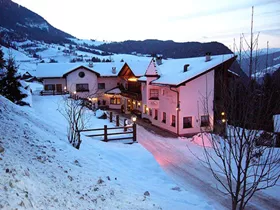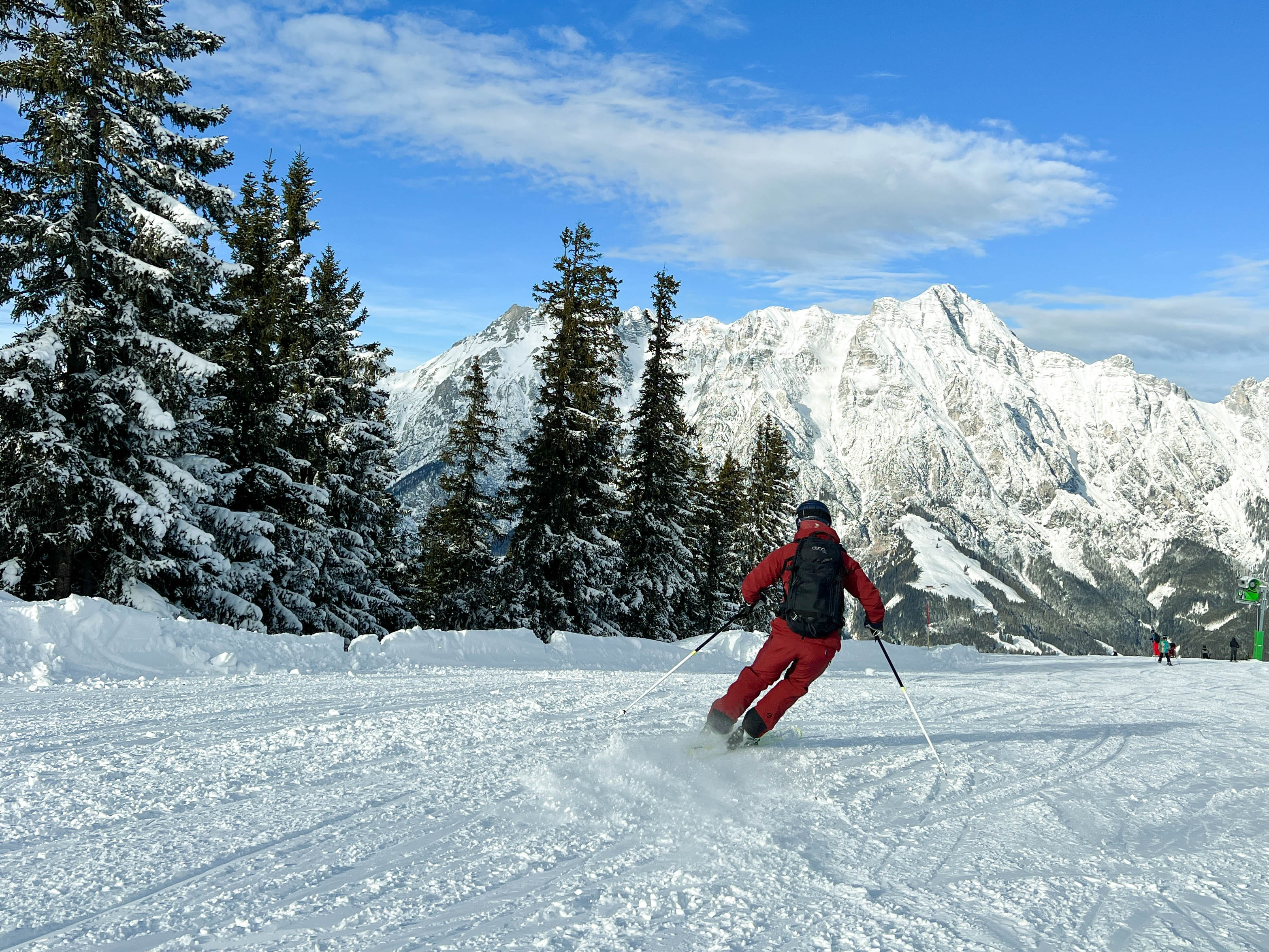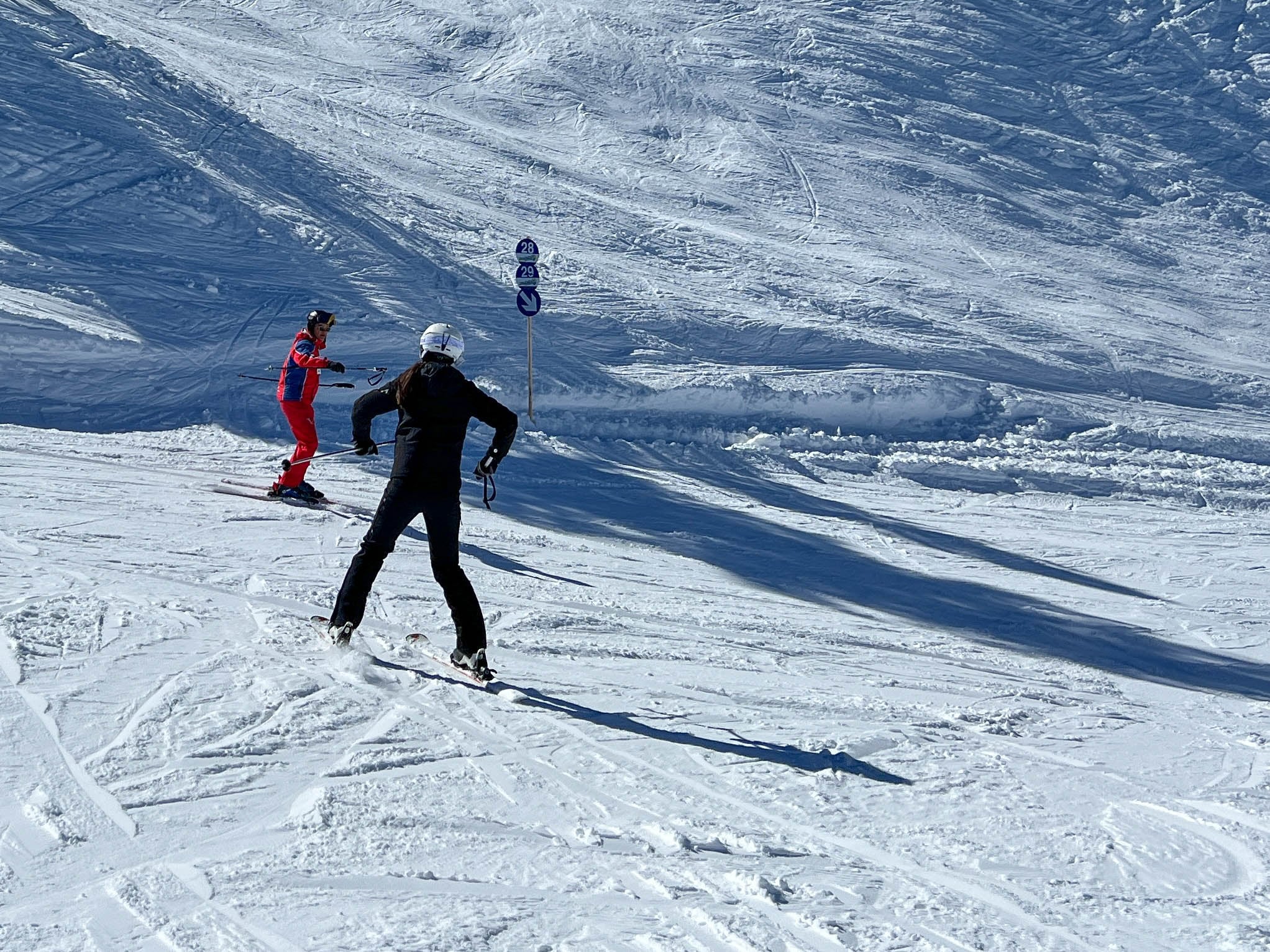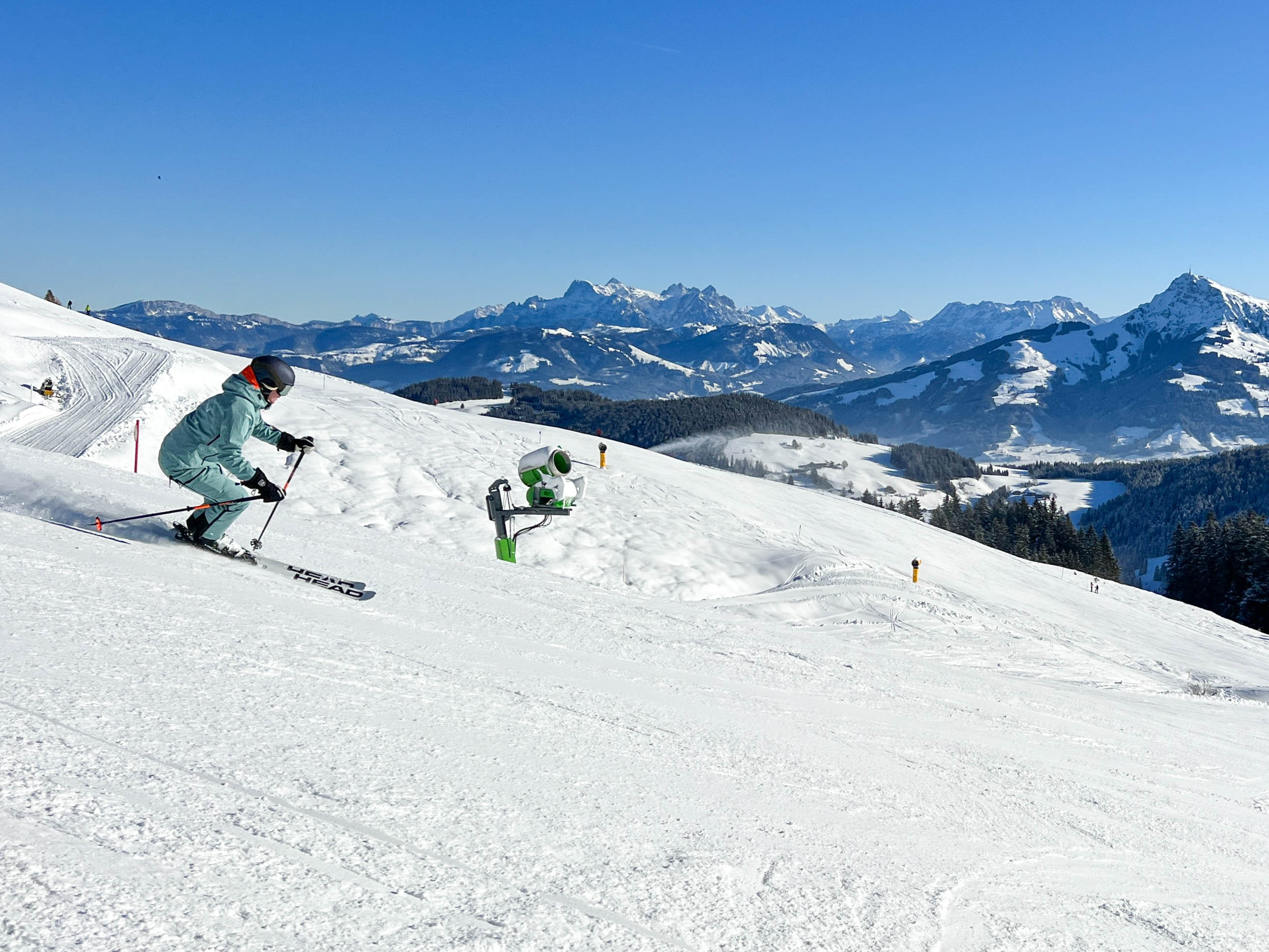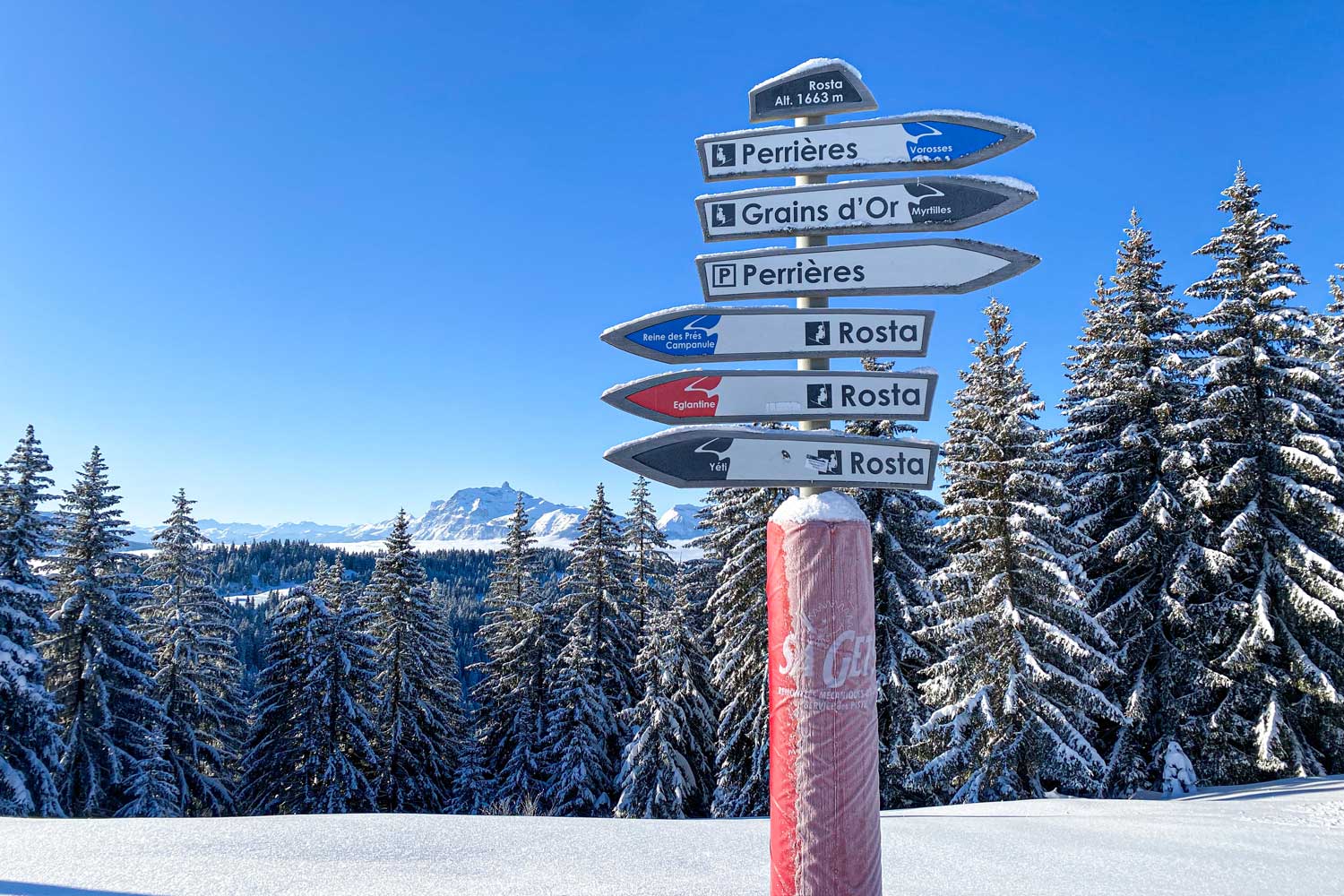
Saalbach Hinterglemm Leogang Fieberbrunn is a beehive of activity in the winter. Millions of skiers choose to go to the Glemm Valley for their skiing holidays, and the dedicated, hardworking staff are kept busy around the clock ensuring each and every guest gets to experience a carefree vacation. Lena Gerbig went behind the scenes at the Skicircus to bring you the story of all the work that has to happen before you head up the first lift of the day! From the many lifties to the piste basher drivers, a whole crew is out before dawn paving the way for a smooth ski day.
4:00AM: Preparing the pistes
Hannes Geisler has spent more than 16 years behind the wheel of a piste basher. It snowed last night and that means he has lots of work to do still. Before dawn, he’s already up preparing the pistes for another day of skiing. Hannes Geisler is in charge of a team of eight employees and he is responsible for the Bernkogel and the surrounding slopes. The piste basher can only prepare 5.5 metres of piste at a time. It weighs 14 tons and consumes 250 litres of diesel per night.
7:00AM: Testing the lift cables
Johann Maurer is the operations manager at the Bernkogel. This means that he is responsible for the proper functioning of all the lifts and pistes in a certain area. In the morning, for example, he oversees the testing of the Bernkogel cable car without the gondolas attached. The cable does a few rotations in order to remove the ice and to detect any potential problems. In addition, the cable tension and other data are measured and entered into the data book. Finally, a special gondola with products for the mountain huts is sent up to the top.
7:30AM: Checking the slopes
The mountain staff step into the first lift right as it opens. Gerd Höller and Robert Schernthaner are among the group of 30 who form the ski patrol team. The team is divided into groups, each group responsible for its own part of the ski area and for performing rescues when necessary, including giving first aid. The ski patrol also monitors the safety of each piste and makes sure all the runs and hazards are clearly marked. They ski each slope three times a day in order to carry out regular checks.
7:40AM: Firing the snow guns
The Bernkogel at Saalbach Hinterglemm Leogang Fieberbrunn has a whopping 95 computer-controlled snow guns. Each section in the ski resort has its own “snow making manager” who controls when, where and how much artificial snow is produced. During the 2016/2017 ski season, Saalbach has already used more than 3000 cubic metres of water in snow production. But from mid-February, the snow guns are no longer used. It’s nearing the end of the ski season and the farmers want to be able to use the alpine pastures soon for their livestock.
© Lena Gerbig
7:45 PM: Preparing the lifts
Christian Rasler has worked at the Bernkogel for over 25 years; today, he’s working as a lift operator. This particular lift has 82 gondolas that have to be hung back onto the cable every morning. At night, they are stored in the basement of the base station, from where they are sent one by one along a lift towards the cable. Once the lift is operating, Christian is responsible for the safety of its riders. This means that the onus is on him to close the lift when weather conditions require. But for now, the employees of the mountain restaurants and the other facilities take the lift to the top of the mountain.
8:10 PM: The calm before the storm
Back in the valley, Hannes Geisler has stored the piste basher securely in the garage. You can find him here even after ski season ends, busy maintaining the machines. The lifts on the Bernkogel open to the public at 8:30am so the ticket tellers stand by, ready to sell lift passes for another day of skiing and snowboarding. By 5pm all employees must be off the mountain so the piste bashers can start preparing the pistes for tomorrow.
© Lena Gerbig
Saalbach Hinterglemm Leogang Fieberbrunn is a beehive of activity in the winter. Millions of skiers choose to go to the Glemm Valley for their skiing holidays, and the dedicated, hardworking staff are kept busy around the clock ensuring each and every guest gets to experience a carefree vacation. Lena Gerbig went behind the scenes at the Skicircus to bring you the story of all the work that has to happen before you head up the first lift of the day! From the many lifties to the piste basher drivers, a whole crew is out before dawn paving the way for a smooth ski day.
4:00AM: Preparing the pistes
Hannes Geisler has spent more than 16 years behind the wheel of a piste basher. It snowed last night and that means he has lots of work to do still. Before dawn, he’s already up preparing the pistes for another day of skiing. Hannes Geisler is in charge of a team of eight employees and he is responsible for the Bernkogel and the surrounding slopes. The piste basher can only prepare 5.5 metres of piste at a time. It weighs 14 tons and consumes 250 litres of diesel per night.
7:00AM: Testing the lift cables
Johann Maurer is the operations manager at the Bernkogel. This means that he is responsible for the proper functioning of all the lifts and pistes in a certain area. In the morning, for example, he oversees the testing of the Bernkogel cable car without the gondolas attached. The cable does a few rotations in order to remove the ice and to detect any potential problems. In addition, the cable tension and other data are measured and entered into the data book. Finally, a special gondola with products for the mountain huts is sent up to the top.
7:30AM: Checking the slopes
The mountain staff step into the first lift right as it opens. Gerd Höller and Robert Schernthaner are among the group of 30 who form the ski patrol team. The team is divided into groups, each group responsible for its own part of the ski area and for performing rescues when necessary, including giving first aid. The ski patrol also monitors the safety of each piste and makes sure all the runs and hazards are clearly marked. They ski each slope three times a day in order to carry out regular checks.
7:40AM: Firing the snow guns
The Bernkogel at Saalbach Hinterglemm Leogang Fieberbrunn has a whopping 95 computer-controlled snow guns. Each section in the ski resort has its own “snow making manager” who controls when, where and how much artificial snow is produced. During the 2016/2017 ski season, Saalbach has already used more than 3000 cubic metres of water in snow production. But from mid-February, the snow guns are no longer used. It’s nearing the end of the ski season and the farmers want to be able to use the alpine pastures soon for their livestock.
© Lena Gerbig
7:45 PM: Preparing the lifts
Christian Rasler has worked at the Bernkogel for over 25 years; today, he’s working as a lift operator. This particular lift has 82 gondolas that have to be hung back onto the cable every morning. At night, they are stored in the basement of the base station, from where they are sent one by one along a lift towards the cable. Once the lift is operating, Christian is responsible for the safety of its riders. This means that the onus is on him to close the lift when weather conditions require. But for now, the employees of the mountain restaurants and the other facilities take the lift to the top of the mountain.
8:10 PM: The calm before the storm
Back in the valley, Hannes Geisler has stored the piste basher securely in the garage. You can find him here even after ski season ends, busy maintaining the machines. The lifts on the Bernkogel open to the public at 8:30am so the ticket tellers stand by, ready to sell lift passes for another day of skiing and snowboarding. By 5pm all employees must be off the mountain so the piste bashers can start preparing the pistes for tomorrow.
© Lena Gerbig




